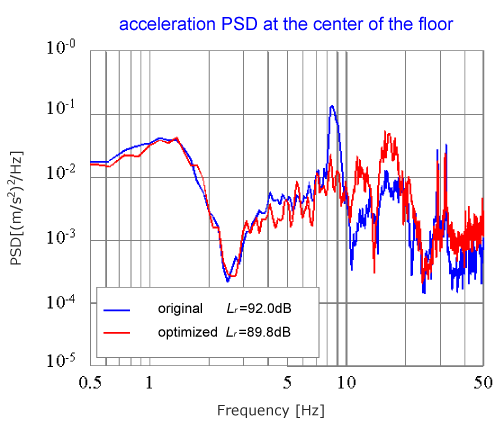Suppression of flexural vibration of car body by using car body-bogie interaction
In the past studies to suppress the flexural vibration of car body, the car body itself has been mainly discussed. In contrast, this research aims at optimizing (from the point of view to improve riding comfort) the properties of connecting elements between car body and bogies such as air springs, traction links, yaw dampers etc.
We have shown that optimization of the combination of two or more elements' properties is necessary to suppress vibration sufficiently. In order to optimize multiple properties of such connecting elements between car body and bogies, we have proposed an efficient method by using GA (genetic algorithms). Furthermore, we have shown theoretically that bogie frames and wheelsets can work as dynamic vibration absorbers against the flexural vibration of car body when the rigidities of rubber bushes of traction links and yaw dampers are adjusted optimally, and a formula to obtain the optimal rigidity has been derived.
To confirm the theoretical results, a series of running test for a Sinkansen-train was carried out by changing the rigidities of rubber bushes of traction links and yaw dampers. It was found that the acceleration power corresponding to the flexural vibration of car body was suppressed largely when the rubber bush rigidities were optimized.

Figure 1. Vibration suppression effect by optimizing rubber bush rigidities in the traction links and yaw dampers
(Measured results for a Shinkansen running at 300km/h)